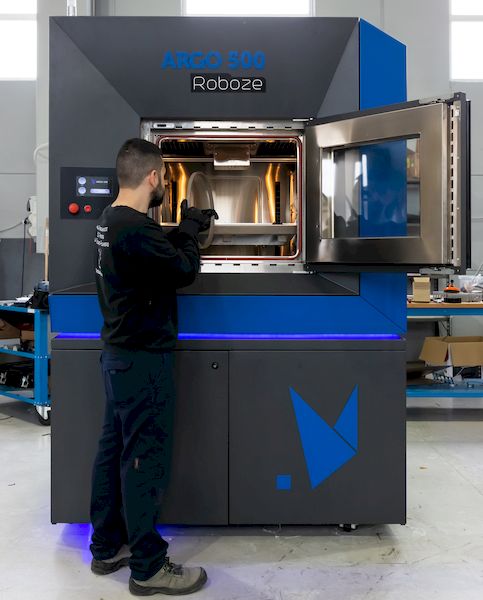![How does Roboze manufacture the huge Argo 500? [Source: Roboze]](https://fabbaloo.com/wp-content/uploads/2020/05/image-asset_img_5eb094227b286.jpg)
Manufacturing large industrial 3D printers is a bit different than you may think.
I reviewed a press release from Italy-based Roboze, who announced:
“Our Argo 500, a large format 3D printer for the production of finished parts with metal replacement materials, has received a very positive response from the market and starting from this month, we are accepting new requests for 2020.”
That sounds like very good news for the company, but I was confused by the “accepting new requests”. Does this mean the machine was being beta tested and is now ready for full production? I’m someone who likes to figure out how things work, and this puzzled me. How, exactly, are Roboze manufacturing their products? Does their factory wait for requests to arrive? Do they build a batch of machines in anticipation of orders?
For smaller products this might be a lesser question, but for a large item such as Roboze’s Argo 500, building machines in the hope that future orders arrive may be a risky financial move. What if orders don’t arrive? Mistakes in planning of this type have caused some ventures to fail when they unexpectedly run out of cash.
I asked Roboze to explain a bit more about their manufacturing process, and found out some interesting facts.
It turns out that Roboze has been successfully producing and delivering Argo 500 units to customers for some time. One is an unnamed “leader in the aerospace sector” that is using an Argo 500, following beta testing that started in late 2018.
Beta Testing Industrial 3D Printers
![The enormous high temperature build chamber on the Roboze Argo 500 industrial 3D printer [Source: Roboze]](https://fabbaloo.com/wp-content/uploads/2020/05/image-asset_img_5eb09422bf3ab.jpg)
The beta testing step is incredibly important because it provides a view of the system by the customer, not the machine designer. Many companies use beta testing to find and fix problems, as well as tweak the design to achieve a better result. Roboze’s Paolo Massa explains:
“We improved the Argo 500 over the last few months in order to ship the best production 3D printer to our clients. The Argo 500 showcases a build plate of 500 x 500 x 500 mm, a vacuum system, a heated chamber able to reach 180°C and a HVP Extruder in order to reach extrusion temperatures of up to 550°C with a specific technology dedicated to high viscosity polymers like Carbon PEEK, PEEK and Ultem AM9085F.
Now Argo 500 also has revamped electronics and sensors along with the auto-leveling of the plate and a high temperature oven — both designed by the Roboze team – which allow to better control the materials and the thermal post-processing of the parts.”
3D Printer Manufacturing
But how are they manufactured at scale? It turns out they are indeed “built to order”, but in batches.
Roboze seems to have calculated the capacity of their factory and within that capacity they will accept orders. In other words, they receive commitment from clients to be allocated one of the machines from the upcoming manufacturing batch.
I’m not sure how many machines were to be produced in 2019, but they are “sold out”, meaning all of their manufacturing capacity has been assigned to paying clients. For 2020, Roboze believes they will be able to produce around 50 Argo 500 3D printers, and that’s what they are able to sell.
Argo 500 Availability
Their announcement then simply means they intend on making 50 large industrial Argo 500 3D printers in 2020 and it’s now possible to get in the queue for one.
Who knows, perhaps if demand is high, which seems to be the case based on their 2019 results, they might consider adding factory capacity to build even more.
Via Roboze











Researchers are now able to procure incredibly powerful 3D printing equipment at lower costs to enable work that was previously impossible.